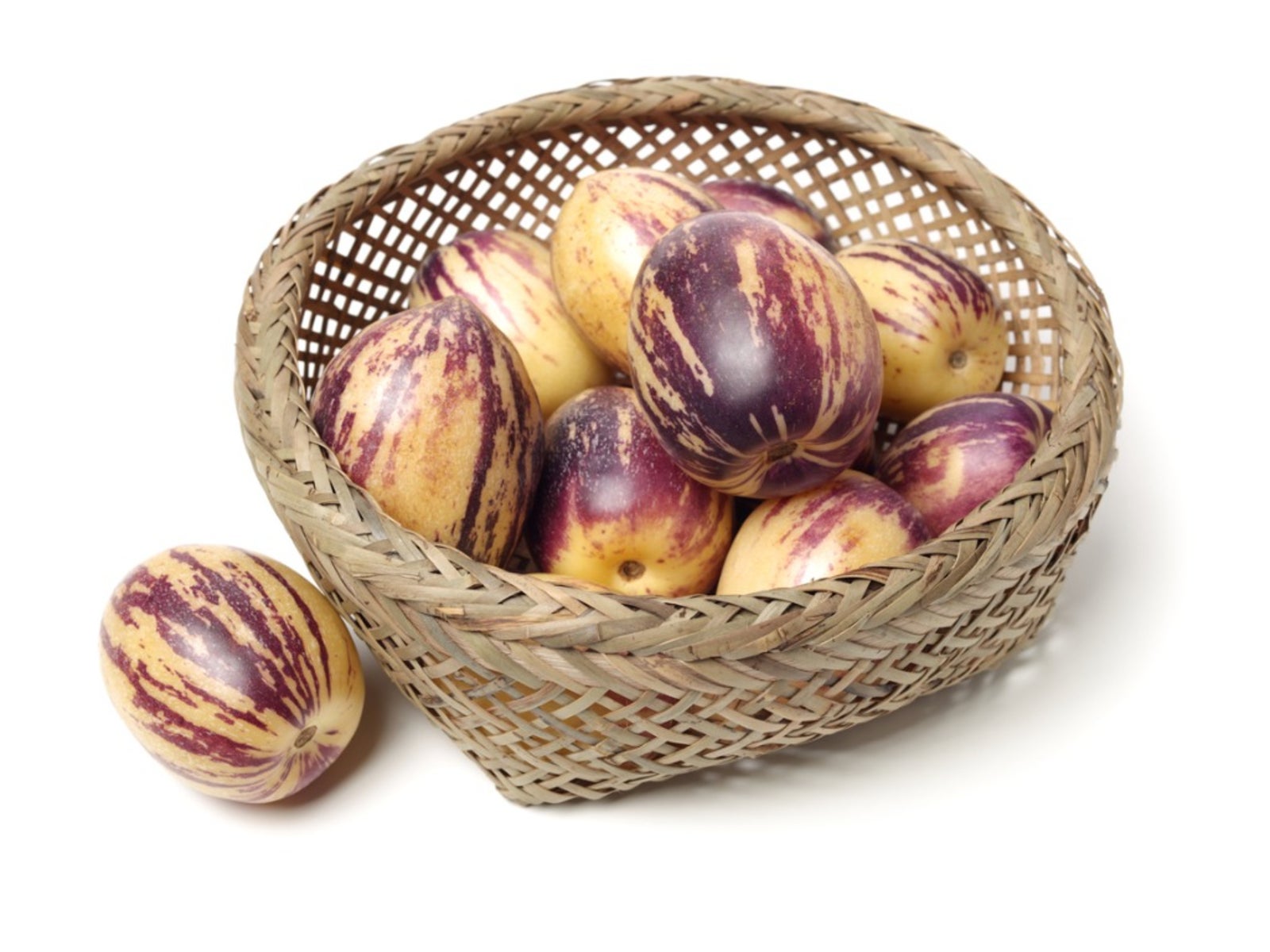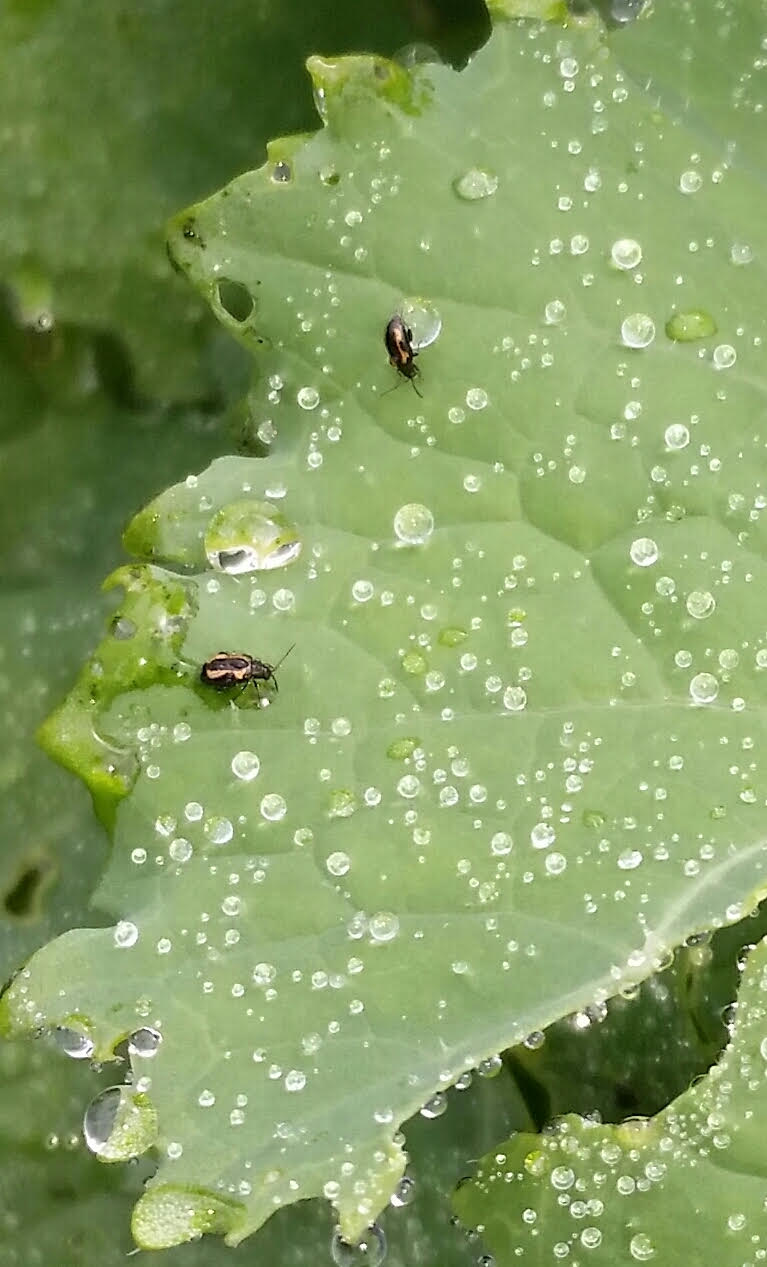Pepino Fruit Harvest: How And When To Pick Pepino Melons

Pepino is a perennial native to the temperate Andes that has of late become an increasingly popular item for the home garden. Since most of these are first time growers, they may wonder when a pepino melon is ripe. For the most optimal flavor, knowing when to pick pepino melons is of paramount importance. Pick the fruit too early and it lacks sweetness, harvest pepino fruit too late and it may be too soft or even beginning to rot on the vine. Read on to find out the perfect time for harvesting pepinos.
Pepino Fruit Harvest Info
Although it prefers warm, frost-free climes, the pepino melon is actually fairly hardy; it can survive low temperatures down to 27 degrees F. (-3 C.). The succulent fruit varies in color and size from variety to variety but at its peak tastes much like a cross between a honeydew and cantaloupe with a hint of cucumber thrown in. This makes it a unique fruit that can be used in both sweet and savory dishes as well as being delicious eaten fresh on its own. Pepino melons are grown commercially in New Zealand, Chile, and western Australia where they grow as annuals, but they can be grown in the milder areas of northern California as well. Depending upon the variety, the fruit is between 2 and 4 inches long (5-20 cm.) borne upon a small, herbaceous plant with a woody base. The plant tends to grow vertically somewhat like the habit of a tomato and, like a tomato, may benefit from staking. A member of the Solanaceae family, it’s no surprise that the plant resembles a potato in many ways. All very interesting, but when is a pepino melon ripe…
When to Pick Pepino Melons
Pepino melons will not set fruit until the night temps are above 65 degrees F. (18 C.). Fruit reaches maturity 30 to 80 days after pollination. Although pepino melons are parthenocarpic, a larger fruit yield will be reached with cross-pollination or self-pollination. An indicator of ripeness is often associated not only with an increase in size but with a change in the color of fruit, and pepino melons are no exception but because there are many varieties, other indices should be used to determine if the fruit is ripe. Skin color may change from green to pale white to cream and finally to yellow with purple striping. Another indicator of ripeness is softening. The fruit, when gently squeezed, should give a little. Be careful when you squeeze the fruit, though, as it bruises very easily.
How to Harvest a Pepino Melon
Harvesting the fruit is easy. Simply pick the ripest looking fruit, leaving any others on the plant to ripen further. They should come off the plant with only the slightest of tugs. Once done harvesting pepinos, they can be stored in the refrigerator for as long as three to four weeks.
Gardening tips, videos, info and more delivered right to your inbox!
Sign up for the Gardening Know How newsletter today and receive a free copy of our e-book "How to Grow Delicious Tomatoes".

Amy Grant has been gardening for 30 years and writing for 15. A professional chef and caterer, Amy's area of expertise is culinary gardening.
-
 Types Of Tomatoes Explained: Explore The Many Wonderful Shapes, Colors, Flavors, & Best Uses
Types Of Tomatoes Explained: Explore The Many Wonderful Shapes, Colors, Flavors, & Best UsesThe world of tomato varieties is vast and fascinating. Learn about the key types to grow in your garden, tailored to your preferences and space.
By Amy Grant
-
 Try The Trend – Turn Any Bed Into A Keyhole Garden With This Clever In-Ground Composter
Try The Trend – Turn Any Bed Into A Keyhole Garden With This Clever In-Ground ComposterKeyhole gardening is an efficient and sustainable practice that saves space. Get started on this DIY project quickly and easily with an in-ground composter.
By Bonnie L. Grant
-
 What Is Eating My Pepino Melon: How To Get Rid Of Pests On Pepino Melon
What Is Eating My Pepino Melon: How To Get Rid Of Pests On Pepino MelonIf you are growing pepino melons, as with any crop, you may be having some trouble with pepino melon pests and wondering "What's eating my pepino melon". This article will help to identify these pests in order to treat them.
By Amy Grant
-
 What Is A Pepino: Tips On Growing Pepino Plants
What Is A Pepino: Tips On Growing Pepino PlantsThe pepino melon shrub is an evergreen native to the mild Andean regions of Colombia, Peru and Chile. So what is pepino? Read this article for information about pepino plant care.
By Amy Grant